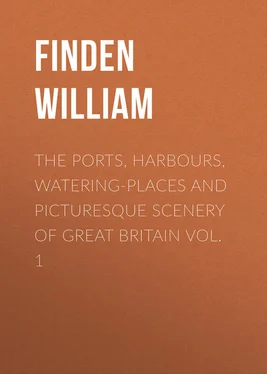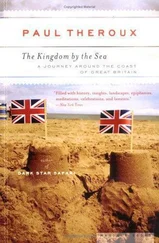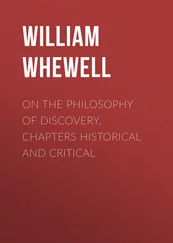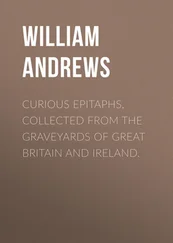William Finden - The Ports, Harbours, Watering-places and Picturesque Scenery of Great Britain Vol. 1
Здесь есть возможность читать онлайн «William Finden - The Ports, Harbours, Watering-places and Picturesque Scenery of Great Britain Vol. 1» — ознакомительный отрывок электронной книги совершенно бесплатно, а после прочтения отрывка купить полную версию. В некоторых случаях можно слушать аудио, скачать через торрент в формате fb2 и присутствует краткое содержание. Жанр: visual_arts, foreign_antique, foreign_prose, на английском языке. Описание произведения, (предисловие) а так же отзывы посетителей доступны на портале библиотеки ЛибКат.
- Название:The Ports, Harbours, Watering-places and Picturesque Scenery of Great Britain Vol. 1
- Автор:
- Жанр:
- Год:неизвестен
- ISBN:нет данных
- Рейтинг книги:5 / 5. Голосов: 1
-
Избранное:Добавить в избранное
- Отзывы:
-
Ваша оценка:
- 100
- 1
- 2
- 3
- 4
- 5
The Ports, Harbours, Watering-places and Picturesque Scenery of Great Britain Vol. 1: краткое содержание, описание и аннотация
Предлагаем к чтению аннотацию, описание, краткое содержание или предисловие (зависит от того, что написал сам автор книги «The Ports, Harbours, Watering-places and Picturesque Scenery of Great Britain Vol. 1»). Если вы не нашли необходимую информацию о книге — напишите в комментариях, мы постараемся отыскать её.
The Ports, Harbours, Watering-places and Picturesque Scenery of Great Britain Vol. 1 — читать онлайн ознакомительный отрывок
Ниже представлен текст книги, разбитый по страницам. Система сохранения места последней прочитанной страницы, позволяет с удобством читать онлайн бесплатно книгу «The Ports, Harbours, Watering-places and Picturesque Scenery of Great Britain Vol. 1», без необходимости каждый раз заново искать на чём Вы остановились. Поставьте закладку, и сможете в любой момент перейти на страницу, на которой закончили чтение.
Интервал:
Закладка:
Leland, who visited Whitby a few years before the suppression of the monastery, describes it as a "great fisher town;" and he mentions that when he was there a new quay and pier were in course of erection. Until the establishment of the alum works in its neighbourhood, towards the latter end of the reign of Queen Elizabeth, Whitby appears to have been a place of little trade. As this new branch of commerce extended, the trade and population of Whitby steadily increased until it has attained its present importance.
WHITBY, FROM THE NORTH-WEST
The view of Whitby from the north-west, by Balmer, is taken from the sands near Upgang, between Whitby and the village of Sandsend. From this point nearly the whole of the west pier is seen, extending directly from the shore, and having a light-house near its outer extremity. Beyond the pier, and on the other side of the river, are seen the houses built on the sloping side of the cliff, and on its top the ruins of Whitby abbey, which
"In solemn grandeur, calm and still,
O'erlook the restless flood."
The first authentic notice that we have of Whitby, is contained in Bede's Ecclesiastical History. In the time of the venerable historian it was called in the Anglo-Saxon language Streoneshalh , a name which he interprets in Latin by the words Sinus Fari ; that is, in English, "Light-house bay." Subsequently it received from the Danes its present name of Whitby, a word which is probably derived from hvit or whit , white; and by , a dwelling, or in its more extended sense, a village or town. It has been supposed that this name might be given to the village in consequence of its being built chiefly with stone taken from the ruins of the monastic buildings; but the supposition is untenable, unless we at the same time presume that the stones, which were taken from buildings which had been destroyed by fire, were rendered white by being burnt. In Domesday Book the place appears to be called Prestebi – Priestby – as well as Witeby – Whitby. The name Priestby, which soon became obsolete, probably denoted that part of the village which lay on the east side of the Esk, and was more immediately dependent on the monastery.
The abbey of Whitby, founded by St. Hilda in 658, acquired considerable importance as the residence of this saint, of whose miracles certain marvellous traditions are still current in this vicinity. At the dissolution, under Henry VIII., Richard Cholmley, Esq., obtained a lease for twenty-one years of the site of the abbey and several parcels of its lands. In 1550 those lands were sold by the crown to John, earl of Warwick, who again sold them to Sir John Yorke, of whom they were purchased by the original lessee, then Sir Richard Cholmley, in 1555. Since that time the property has continued in the family of Cholmley, who enjoy many valuable rights and privileges as lords of the manor of Whitby. On the dissolution of the monastery, the abbey was stripped of every thing that was valuable. The bells were taken down, and the church was unroofed for the sake of the timber and lead. The walls only were spared, as the cost of taking them down would probably have been greater than the value of the stones. Though time has destroyed much of Whitby Abbey, yet the ruins still form a conspicuous and interesting object when viewed from the sea. The tower, which for several preceding years had been in a tottering state, fell down 25th June, 1830. The parish church, a plain structure, probably founded about the beginning of the twelfth century, stands at a short distance to the north-westward of the abbey. The direct foot-way to the church-yard from the town is by a steep ascent of one hundred and ninety steps.
It is worthy of remark that the number of ships registered at Whitby by no means affords a criterion of the trade of the place, for the greatest part of them are freighted to and from other ports. Perhaps no port in the kingdom presents so great a difference as Whitby between the number of ships registered at the port, and the number annually entered and cleared. This discrepancy between the trade and the tonnage of the port arises from the circumstance of many wealthy persons who live there having their ships built and registered at Whitby, but chiefly employed, on freight, in the trade of other places. When speaking of the shipping of Whitby, it would be unpardonable not to mention that Captain James Cook one of the most distinguished of British circumnavigators, served an apprenticeship in a vessel belonging to that port.
The principal trades carried on at Whitby are ship-building, and the manufacture of sail-cloth. Its chief imports are coals from Newcastle and Sunderland, and timber, hemp, flax, tar, iron, and tallow, from the Baltic. Alum manufactured in the neighbourhood is shipped at Whitby, but the principal article of export is at present stones for building, of which great quantities are sent to London.
From the light-house, on the western pier, a tide-light is displayed at night time, as long as there is eight feet water on the bar. The light is stationary, and is visible at the distance of two leagues in clear weather. During the same period of tide, in the day, a flag is hoisted on the west cliff. It is high water at Whitby pier at forty minutes past three o'clock at the full and change of the moon.
ROBIN HOOD'S BAY
The above is the name of a fine bay on the Yorkshire coast, between Whitby and Scarborough, and also of the fishing village, situated towards its northern extremity. In the view, which is taken from the north, several of the houses are seen standing upon the very edge of the cliff. The promontory to the left is called Ravenhill, and forms the south-eastern extremity of the bay. From an inscription dug up at Ravenhill in 1774, it appears that there had formerly been a Roman camp there.
The ancient name of the bay was Fyling, and from what reason or at what period it first received the name of Robin Hood's Bay is uncertain. That it ever was the resort of the famed outlaw of that name is extremely questionable; although two or three tumuli on the moor, about two miles to the southward of the village, are said to be the butts, in shooting at which he exercised his men in archery. Near Whitby Lathes, about five miles to the north-west of Robin Hood's Bay, are two upright stones, which are said to mark the spots where the arrows of the bold robber of Sherwood Forest, and his man Little John, fell, when, in a trial of strength, they discharged them from the top of Whitby Abbey in the presence of the abbot. As the distance from these stones to the abbey is rather more than a mile and a half, it is evident that a long bow must have been drawn by some one, if not by Robin Hood. It has been supposed that the place was originally called Robin Wood's Bay, from a fisherman of that name, who formerly resided there; but this conjecture rests on no better ground than the fact of two or three fishermen of the name of Wood having lived there in modern times. A family of fishermen of the name of Wood, with whom "Zebedee" appears to have been a favourite "fore-name," have resided at Runswick, a fishing village, about seven miles northward of Whitby, for several generations.
Leland, in his Itinerary, written about three hundred years ago, calls the village by its present name, Robin Hood's Bay, and describes it as "a fisher townlet of twenty boats." It is still, as in his time, almost entirely inhabited by fishermen. The houses forming the principal street are built on each side of a steep road, leading down to the shore; while others, as may be seen in the view, are built upon the very extremity of the cliff. The approach to the village is by a steep descent, which is extremely inconvenient for carriages. It is about fourteen miles north-west of Scarborough, and seven south-east of Whitby; and the population is about a thousand.
Читать дальшеИнтервал:
Закладка:
Похожие книги на «The Ports, Harbours, Watering-places and Picturesque Scenery of Great Britain Vol. 1»
Представляем Вашему вниманию похожие книги на «The Ports, Harbours, Watering-places and Picturesque Scenery of Great Britain Vol. 1» списком для выбора. Мы отобрали схожую по названию и смыслу литературу в надежде предоставить читателям больше вариантов отыскать новые, интересные, ещё непрочитанные произведения.
Обсуждение, отзывы о книге «The Ports, Harbours, Watering-places and Picturesque Scenery of Great Britain Vol. 1» и просто собственные мнения читателей. Оставьте ваши комментарии, напишите, что Вы думаете о произведении, его смысле или главных героях. Укажите что конкретно понравилось, а что нет, и почему Вы так считаете.












